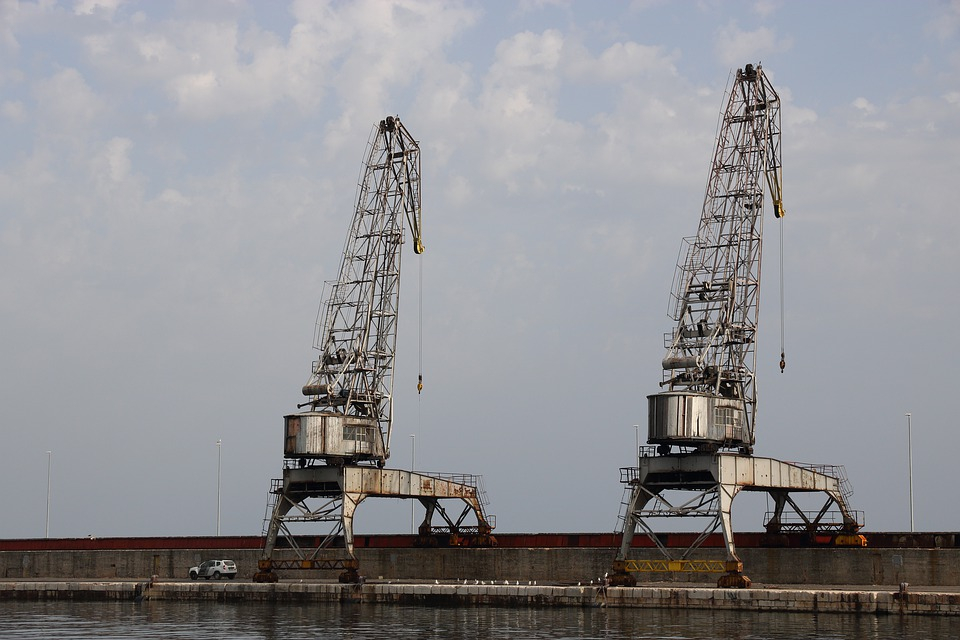As Poslovni Dnevnik writes, despite the slowdown in global supply chains and the subsequent global recession, customers ordered products online in record quantities. Chinese manufacturers had to work overtime to deliver all of those orders, and all of that someone had to deliver them all to customers.
That’s where the problem arose, and Rijeka Port might well be part of the solution as we battle through the ongoing pandemic.
As Zoran Starcevic, director of cargo-partner, one of the largest logistics companies in Croatia, explains, something unprecedented and extremely interesting has happened when it comes to the system of global economy and consumption.
“Because of the coronavirus pandemic, people stopped travelling. They stayed at home with limited mobility available. This situation has created an unexpected desire to purchase products online such as office equipment and home furniture, laptops, sports exercise equipment at home, garden furniture, etc. All these goods are usually transported by sea in shipping containers, from Chinese factories with delivery to the door of the customer,” Starcevic points out.
After the start of the pandemic, factories in China remained closed for two months, which actually triggered a chain of problems. The ordered goods failed to arrive to buyers in Europe, so Europeans did the only thing they could – they ordered products online like never before. They couldn’t spend much, if anything on travel, outings and the like because they were forced to stay indoors.
“It was to be expected that the decline in production in China would affect the whole world, this was as a result of the halted production chain in the first months of the pandemic in 2020, which is due to the reduction of production in the countries that imported raw materials from China. On the other hand, many sea carriers reduced the dynamics of their departures due to reduced demand and capacity. The unfavourable export-import ratio, after the resumption of production, led to a significant imbalance in the availability of transport equipment, so a situation arose in which Chinese ports are simply faced with a shortage of empty containers,” he explained
During the festive period, the import of shipments from the Far East increased. Planning in that regard is done carefully, keeping the Chinese New Year in mind as well. After the rapid re-start of the economy in many countries, trying to compensate for months of stagnation, many companies decided to boost import capacities. In practice, the increased demand for imports has resulted in the rapid filling up of shipping capacity and an imbalance in the disposal of shipping equipment.
This actually means that it takes some time for containers leaving from European ports to physically return to China, in order to be operational again. For these reasons, as well as the break that follows the Chinese New Year, and with maritime transport being the most economically viable option, things are technically overbooked until March next year, according to cargo-partner.
It is important to mention that shipowners did not order the construction of new containers because all parameters before the coronavirus pandemic indicated that global trade would go into recession, and as they had liquidity problems, they began to cut costs.
Then the coronavirus appeared all over the world.
Shipping companies found themselves in a very awkward situation as demand and the nature of freight transport by sea went in an unexpected direction. Carriers cancelled individual weekly departures from Europe to Asia throughout the year. Therefore, there are currently not enough boats on the market to rent because the global merchant fleet is suddenly filled with great demand, so “plugs” are forming at almost all traffic hubs. Most ships and containers were sent to the United States due to the highest demand. When such a ship docks in a port in the USA, the container is unloaded, but the service of a local freight forwarder and truck carrier can take up to 10 days, then it takes another 7 days to deliver the goods, and maybe another 10 days to return the container to the terminal. Only then is the container ready to re-board and return to Asia.
One example is the congestion of the port of Los Angeles which is working at maximum capacity. Currently, the situation is such that 15 ships are waiting anchored in front of the port, and the containers can neither be unloaded nor loaded for return. Shipowners always choose the longest routes to the largest ports because that way they can easily maximise their earnings.
cargo-partner offers its customers in the EU a faster solution – Adria Priority Express premium service for container transport via Rijeka Port as one of the Adriatic ports. Transit time from the main ports from the Far East to the main ports of the Adriatic is 5-8 days faster than the ports of the North Seas. Thanks to the various options with selected carriers, cargo-partner provides free equipment and guarantees safer departure and delivery time. It also offers a comprehensive logistics service that includes warehousing, truck services, container tracking through their intelligent container tracking system and many other benefits, they stated from cargo-partner company in reference to Rijeka Port’s new reserve status.
For the latest travel info, bookmark our main travel info article, which is updated daily.
Read the Croatian Travel Update in your language – now available in 24 languages.
Join the Total Croatia Travel INFO Viber community.









